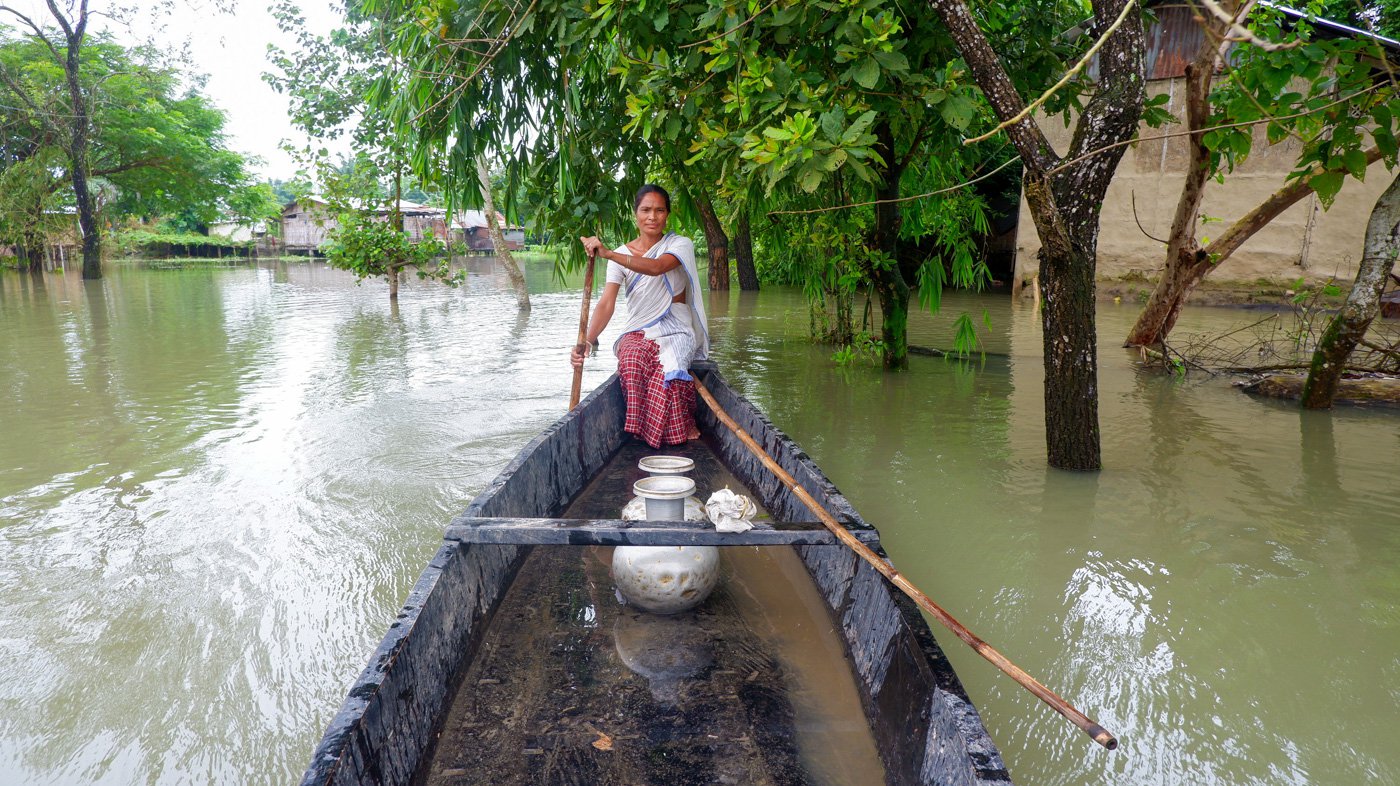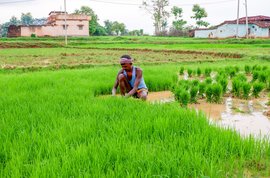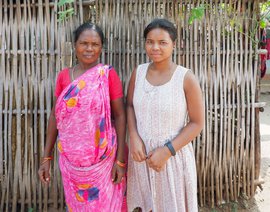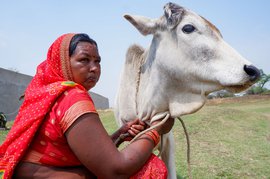From the window of her home, as far as the eye can see, there is water – this year’s floods have not receded. Rupali Pegu lives just a kilometre from the Subansiri river – an important tributary of the Brahmaputra that annually floods vast tracts of land in Assam.
Water may be all around, but ironically, finding potable water is a challenge, she says. In her village, Bordubi Maluwal in Assam’s Lakhimpur district, drinking water is contaminated. “Most hand pumps in our village and the neighbouring ones are submerged,” Rupali explains.
To fetch water from the hand pump near the road, she relies on a canoe. Armed with three large steel water containers, Rupali rows towards the road, also partially submerged. She uses a long bamboo stick to carefully navigate through the flooded village. “Moni, come along!” she calls out to her neighbour, who often joins her on these trips. The friends help each other fill the containers.


Left : Rupali is a resident of Assam's Lakhimpur district where floods cause a range of problems annually. Right: Like others in the village, she lives in a chang ghar — a bamboo house elevated from the ground — built to resist floods


Left: Rupali's village is very close to the Subansiri river, a tributary of the Brahmaputra. When the village is submerged, she uses a canoe to get around. Right: She rows to a handpump in the hope of getting clean water
At the handpump, after a few minutes of pumping, clean water finally starts flowing. “It hasn't rained for three days, so we managed to get water,” Rupali says with a faint smile of relief. Fetching water is seen to be women’s labour, and as the river rises, it is women who bear the added burden.
When the hand pump disappoints, “we boil and drink this,” says 36-year-old Rupali, pointing to the stagnant, muddy waters swirling around her house.
Rupali’s bamboo house, like many others in this region, is specially designed to withstand the floods. Locally known as
chang ghar
– these houses are elevated on bamboo stilts to avoid flooding. Rupali’s ducks have made her porch their home, and their quacking fills the silence.
The canoe is also Rupali’s carrier when she needs to relieve herself. Her home once had a washroom, but it is now submerged. “We have to go far, towards the river,” she says. Rupali makes that journey in the dark.


Left and Right: Water may be all around, but ironically, finding potable water is a challenge
Not just daily lives, but livelihoods of the largely Mising community who live here, are also impacted. “We had 12 bighas of land where we cultivated rice. But this year, all our crops are submerged and we’ve lost everything,” says Rupali. A part of her land has already been swallowed by the river. “We will only know after the flood how much land the river has taken this year,” she says.
Agriculture is the traditional occupation of Mising people (listed as Scheduled Tribe in the state). Unable to farm, many are forced to migrate in search of livelihoods. According to this
study
in 2020, the out-migration in Lakhimpur is 29 per cent, more than three times the national average. Rupali’s husband Manus has gone to Hyderabad to work as a watchman, leaving Rupali in-charge of the home and their two children – a son and a daughter. Manus earns Rs. 15,000 a month and sends home Rs.8,000-10,000.
Rupali says that for six months in the year when their homes are on flooded ground, finding work is tough. “Last year we received some help from the government – polythene sheets, ration. But nothing this year. If we had money, we would have left,” she adds, with a note of sadness.




